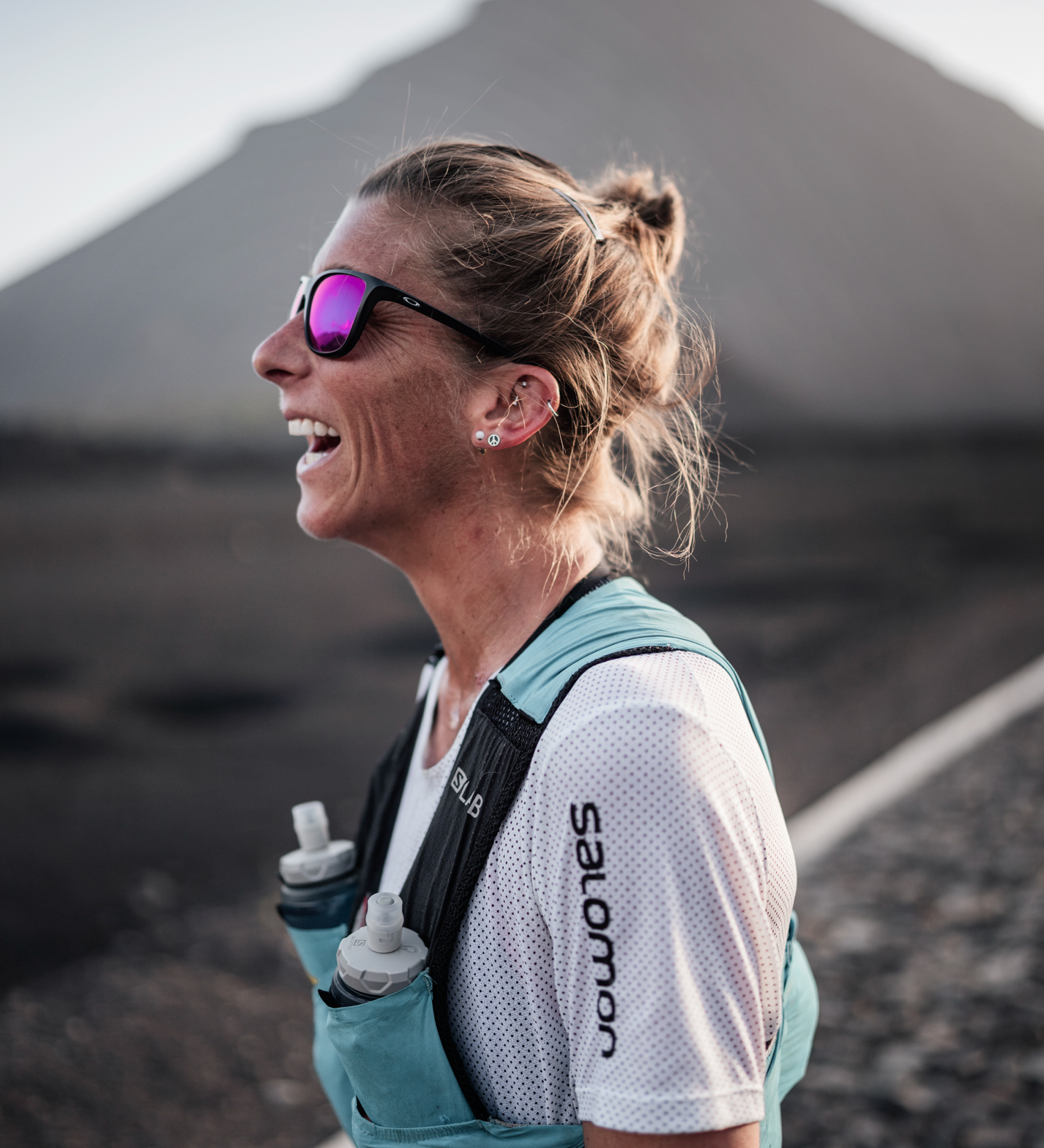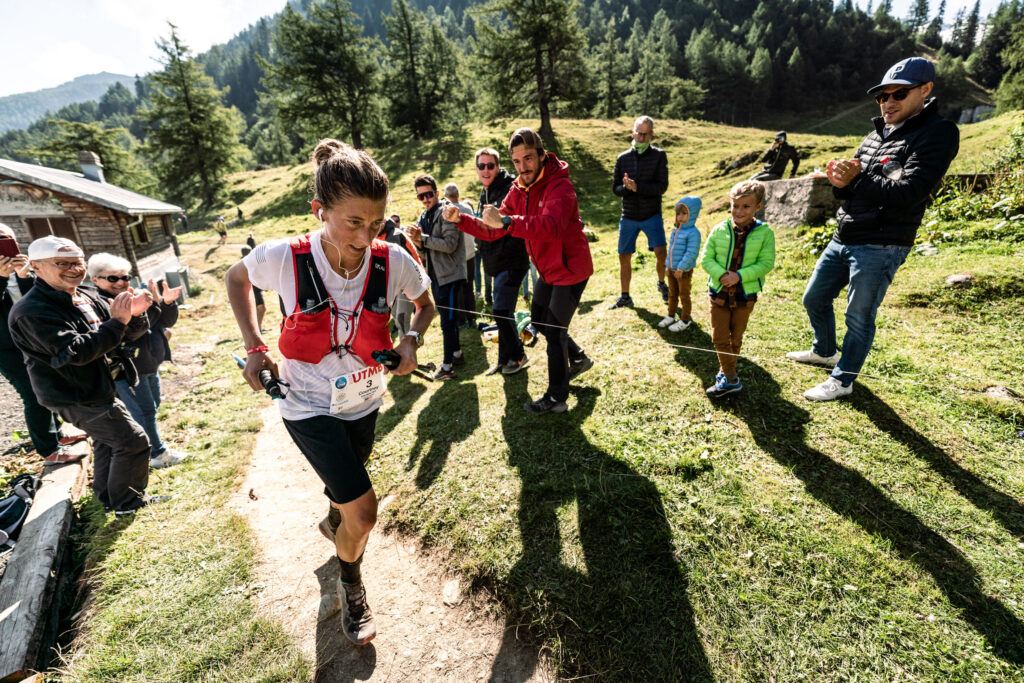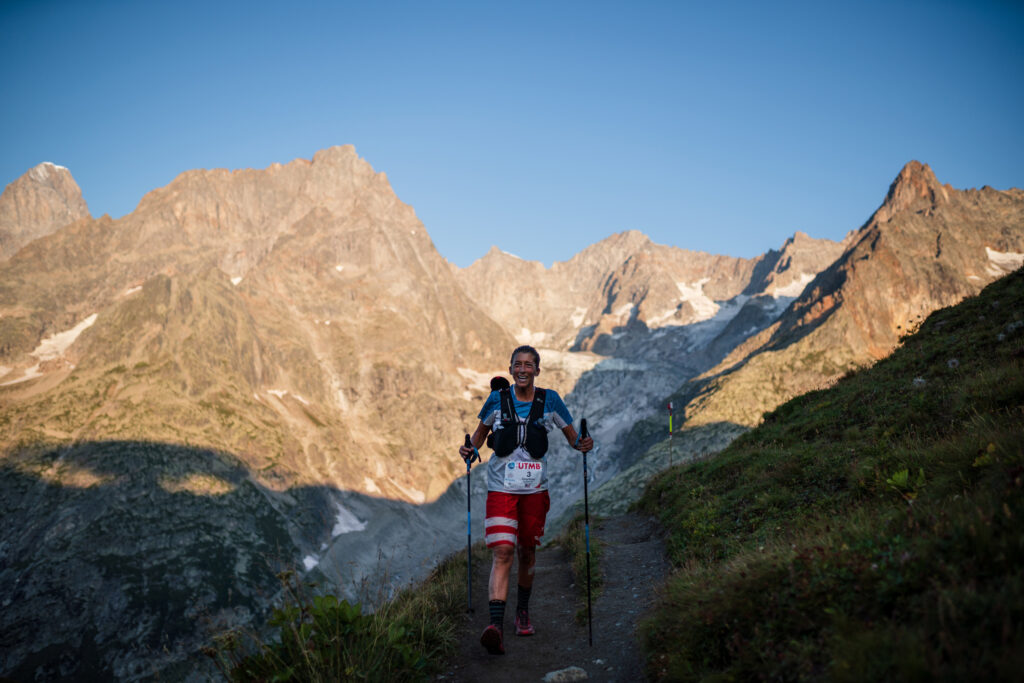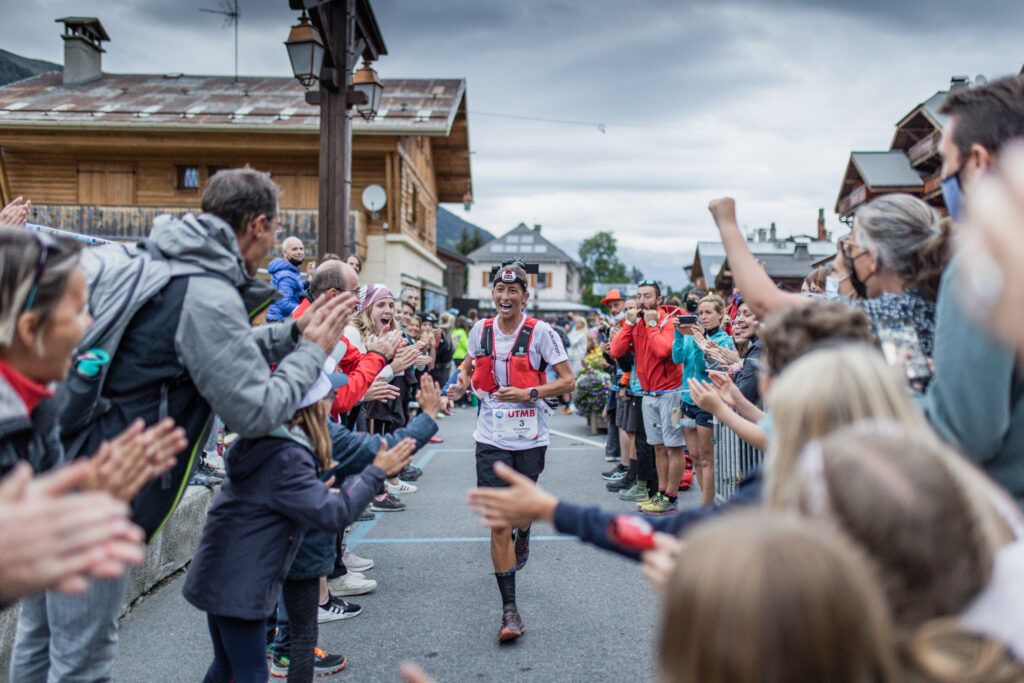15 minutes with Courtney Dauwalter
Sophie Nicholson speaks to ultra running legend from Minnesota about mashing UTMB records, relishing the 'pain cave' and her love of beer and croissants


Image credit | Jordi Saragossa
Sophie Nicholson: In the über-competitive world of ultra running, your consistently phenomenal results combined with your ever-present smile, chilled vibe and long basketball-style running shorts ensure you really do stand out from the rest of the crowd. Have you always been comfortable blazing your own trail?
Courtney Dauwalter I’m not sure if I’d call it ‘blazing my own trail’! I do know that I grew up in a house where we were taught to work really hard at whatever goal we were going after, but also that it is important to have a blast while doing it. These values are still at the centre of what I do.
You’re well known for regularly beating all the men in some of the most difficult races on the planet. When it comes to ultra running, do you think that psychological fortitude is more important than physical training and biological strength?
CD Ultra running is absolutely physical and training your body for that is important. However, I think the mental side is even more important. Our brains are pretty amazing and when the physical pain sets in during an ultra (it always becomes physically painful!), it’s our brains that help us keep pushing.
What’s amazing is that despite that physical pain, you always seem to be smiling! How you deal with the inevitable highs and lows during a race?
CD Part of the intrigue of ultras is that there are going to be many, many highs and lows throughout the race. When I sign up for these ultra-distance events, I hope to experience the ‘pain cave’. That is what I picture during those low moments where you aren’t sure how you will ever keep moving forward. It is in those lowest moments where I think we have the opportunity to make ourselves better. So, when it gets really hard, I remember that this is what I came for. This is where we get better! I smile, I look around for any hallucinated friends, and I try to keep digging into my cave to make it a little bit bigger.
You’ve stood on top of the podium at the world’s toughest and most prestigious 100 milers, including the UTMB and Western States. For most people the prospect of running 100 miles is either an out of reach dream or a horrific nightmare – what it is about these ultra distance events that appeals to you so much?
CD I tried my first 100 mile race in 2012 and ended up dropping out of it at mile 60. My legs hurt really bad, but my brain was the thing that gave up. I convinced myself that I wasn’t capable of running 100 miles and that I should just quit the race. This DNF helped me understand how strong our brains are, and that what we tell ourselves is important. It made me want to try again, and it made me want to learn the mental side of ultra running. This is what appeals to me in these ultra-distance events. Our brains and bodies have to work together to keep us moving forward. I’m interested in exploring what is possible and that it what has me signing up for more long ultras. It can feel impossible standing on a start line with 100 miles of trail in front of you before you will reach the finish line. But it also feels really, really cool.

You’re obviously best known for your record-breaking trail running exploits, but a little bird told us that you actually were a skier before you got into running – is that right?
CD I ran cross-country in middle school and high school and actually signed up for the cross-country ski team with some running teammates just to keep up our endurance through the long, cold winters of Minnesota. I spent most of my first season on the ski team planting my pole between my legs and laying in the snow, but quickly fell in love with the sport. We had a fantastic coach who spent the time to teach us how to stay on our feet and move efficiently across the snow. I was lucky enough to continue my cross-country ski racing through college and still play around on my skinny skis every winter here in Colorado.
Ever tempted to don the lycra race suit and giving skimo a shot?! Many of the world’s foremost trail runners – like Kilian Jornet, Francois d’Haene, Hillary Gerardi, Emelie Forsberg – compete in skimo competitions when winter rolls around…
CD I haven’t tried skimo yet but am definitely intrigued! It would be cool to try to move quickly on a snow-covered mountain in this way. We will see if I ever sign up for a race!

You certainly have the lungs for it! Speaking of big mountain endurance, you won the UTMB (Ultra-Trail du Mont-Blanc) in 2019 at the first time of asking and then again in 2021 – smashing the women’s record in the process. What it is about the UTMB that seems to suit you so well?
CD UTMB is such a cool race and such a beautiful place! I don’t think there is any one skill that makes someone have a good day at UTMB. It’s a mountainous race so having your climbing legs ready is key, but it also has plenty of runnable sections. Like any 100+ mile race, there are many hours where things can go wrong and being prepared to problem solve is important. I love this race and the energy surrounding it.
The UTMB involves running 171km around Mont Blanc with 10,000m+ of ascent and in 2021 you completed it in under 23 hours. How do you go about fuelling – both in the run up to, and during, ultra events?
CD In the days leading up to UTMB, I was in croissant heaven! I wasn’t too worried about what I ate, just that my body was well rested and ready to go once the race started. During races I try to stick with what I know will work for fuelling. Currently, that is a lot of Tailwind Nutrition. I also mix in some solid foods like mashed potatoes, chews and waffles.
How long does it take for your body to recover after a 100 miler?
CD It really depends on the effort and the terrain. I think after UTMB I took a week entirely off of running and then started to do some slow jogging, as it felt good. It’s important to listen to both our bodies and our minds after a big effort, because sometimes it’s our brains that need the longer break!
On the subject of nutrition, you’re one of the top athletes on the planet but you’re also well known for your love of beer and croissants! Tell us a bit more about your approach to diet…
CD I try really hard to listen to my body and give it what it is craving. If that is beer and a mountain of nachos, then that’s what it will be. If it’s salad, or croissants, or scrambled eggs then there must be something in my body needing that. I also just want to enjoy life, which includes eating and drinking the things I love and not worrying too much about it.

One of the things everyone loves about you is your low-key, super relaxed style because it is the antithesis of the rigid, serious and uptight vibe that emanates from so many other endurance athletes. Would your nearest and dearest say you really as relaxed as you appear?!
CD I hope they would say that I make them smile!
And when it comes to gear, are you easy-come easy-go, or super particular?
CD My focus is always on comfort and making sure the products I’m using work well for me. The races that I run are usually very long, so finding the perfect fit and function in a pair of shoes, some long shorts, or a running vest is hugely important. I feel really lucky to partner with Salomon because their gear, from head to toe, works so well for me.
Running ultras is incredibly hard on the body. Have you had to deal with any significant injuries thus far and do you ever worry about the long-term impact on your own physical health?
CD During Western States 2019 my hip stopped working around mile 65. My leg was buckling underneath me and shooting pain down my entire leg. I ended up dropping out of the race around mile 80. It turned out to be some big imbalances in my body that led to tendonitis. It was a long process of physical therapy to get my hip and body back in balance. Looking back on it, I’m really thankful that this injury happened because it taught me the important of strength work and body maintenance. We have to take care of our bodies if we want to keep asking them to do more.
When it comes to training and injury prevention, what advice would you give to anyone starting out in long-distance running to help prolong their career as long as possible?
CD Patience and consistency are key. Get out the door and put in the work, but be patient with the progress. After my injury in 2019, I also highly recommend doing the little things like stretching and strength work. And, have fun with it. Running is fun!
And finally, can you give us any indication of what the future may hold for you when the time comes to move on from trail running?
CD Five years ago I would have never predicted what my life would look like right now, and so I am trying to really enjoy this chapter that I am in. When this chapter ends, we will see what is on the next page!
Interview with Gear Ed Sophie, April’22